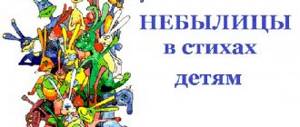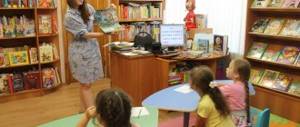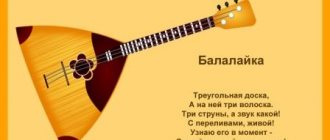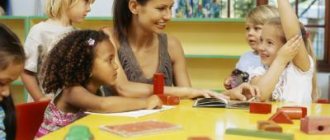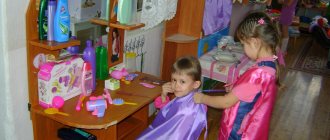In many kindergartens and preparatory groups, teachers often turn to fairy tales. Often, this causes conflicting feelings among parents. On the one hand, these are children and they can study fairy tales. But on the other hand, this is a preparatory group and the children must prepare for school. Fairy tales are hardly taught at school, and such a difference may seem too drastic. So why do you need to go through fairy tales in the preparatory group of kindergarten? What role do they play in the development of a child at this age?
Goals and meaning of fairy tales in the preparatory group
Today people read significantly less than before. Various electronic media are replacing books. However, fairy tales are still a huge success among children. She can be called one of the first representatives of oral folk art. She, like human wisdom, was passed on from generation to generation. Real problems are always hidden behind fairy-tale fiction. Fairy tales for the preparatory group are very important.
In the preparatory group
Currently, studying fairy tales in the preparatory group has several goals.
- Introduction to the world of literature. Children learn to read on their own. They already understand whether they like it or not, they can highlight the morality themselves.
- Increase your child's vocabulary.
Retelling in a preparatory school group
⇐ PreviousPage 10 of 12Next ⇒In the preparatory group for school, retelling classes consolidate and improve the speech skills acquired by children in the senior group. Preschoolers continue to learn to present texts coherently, consistently, completely, without distortion, omissions or repetitions. Children are improving their ability to convey the dialogues of the characters emotionally, with different intonations, to use semantic stresses, pauses, and certain artistic means characteristic of fairy tales (inception, repetitions, etc.) in retellings. Children learn to speak slowly, loudly enough, without tension. Children's independence increases: they learn to retell fairy tales and stories without the help of questions from the teacher.
The literary and artistic material offered for retelling becomes more complex, and the number of texts increases.
In the preparatory group for school, the following works are recommended for classes: Russian folk tales “The Boasting Hare”, “Fear Has Big Eyes”, “The Fox and the Goat”; stories “Four Desires”, “Morning Rays” by K. D. Ushinsky, “Bone” by L. N. Tolstoy, stories by Soviet writers: “Mushrooms” by V. Kataev, “Hedgehog” by M. Prishvin, “Bathing Bear Cubs” by V. Bianchi , “Bear” by E. Charushin, “Just an Old Lady”, “Bad” by V. Oseeva, “Strawberry” by N. Pavlova, “Green Butterflies”, “Icicle Water” by N. Sladkov, “Rivers Overflowed” by G. Skrebitsky, etc.
Literary works have a huge artistic and pedagogical influence on the thoughts, feelings, interests and creative abilities of a child. Retelling activates the entire process of children’s emotional and aesthetic mastery of literary material. The artistic and speech activity of preschool children at the initial stage of its development is manifested in the form of retelling.
A child of six or seven years old can more accurately correlate his retelling with the text, note possible omissions, rearrangement of material; his independence increases when analyzing his comrade’s answer.
The methods and techniques used by the teacher to carry out the tasks of teaching retelling are different: expressive reading of the text two or three times, conversation about what was read, showing illustrations, speech exercises, instructions on the methods and quality of completing the task, assessment, etc. Their correct use will be evidenced by an increase from lesson to lesson in the activity and independence of children when performing educational speech tasks.
It is important that in the classroom there are favorable conditions for communication, the content of which is the presentation of texts of fairy tales and stories. Using various techniques, the teacher encourages children to convey what they read clearly, clearly, clearly, to be able to address their speech to those who listen to them, to be able to clarify and supplement the answers of the narrators, showing a friendly, interested attitude towards their comrades. The accumulated experience of verbal communication is of no small importance in preparing children for school.
Consider a lesson on retelling the fairy tale “The Fox and the Goat.”
The Fox was running along the road, gaped at the crows and fell into the well. There is not much water in the well, you won’t drown if you drown, and you won’t jump out if you jump out.
The Fox is sitting, grieving. What to do here?
Here Goat is walking along the same road, waving his head, shaking his beard, looking around. Having nothing better to do, the Goat looked into the well. I saw Lisa there and asked:
- Hello, Foxy. What are you doing here?
- Yes, I’m resting. It’s hot at the top, but here it’s cool, and there’s as much cold water as you want.
And the Goat has been thirsty for a long time.
- Is the water good?
“The water is good,” answers the Fox. - Yes, jump here and try it. There's enough room for two of us.
The goat foolishly jumped. He muddied the waters and almost ran over the Fox. The Fox got angry and scolded:
“Look, bearded guy, he couldn’t even jump, he got splashed all over.”
The Fox jumped onto the Goat's back, from the back onto the horns, and out of the well! Only Kozel saw her.
The Goat is sitting in the well. He sat there until the evening and didn’t know how to get out.
The owner of the Goat grabbed it and went looking. I searched and searched and found it with great effort. He brought the rope and pulled the Goat out of the well.
Progress of the lesson.
After telling a fairy tale, the teacher conducts a conversation with the children in order to make them want to share their impressions and opinions.
At the same time, he formulates the questions in such a way as to give the children the opportunity to take the initiative when evaluating fairy-tale characters and construct their statements independently: “You listened to the fairy tale with interest. What can you say about the Fox and what about the Goat?
Listening to the answers, the teacher asks the children to justify their conclusions and assessments.
Then the teacher draws the children’s attention to the composition of the fairy tale, to the expressive means of its language.
“Remember how the Fox found herself in the well. Why did the Goat end up in the same well? What voice did the Fox speak in when she praised the coolness in the well and the cold water? How did she start talking to the Goat when he jumped into the well?” These questions lead children to make judgments about the characters' personalities. At the request of the teacher, children reproduce phrases from the dialogue with different intonations. At the end of the conversation, the question follows: “What is told at the end of the fairy tale?” Preschoolers try to concisely convey the content of this part of the fairy tale. The Fox managed to jump out of the well, and the owner pulled the Goat out.
After the conversation, the teacher tells the story again and offers to retell it. Next, children practice various types of retelling. First, two or three children tell the tale from beginning to end, then the teacher suggests collectively retelling the text: one child tells the first part (until the moment the Goat jumped into the well), the other continues the retelling until the end.
Let's take another lesson as an example - retelling the story by K. D. Ushinsky “Four Desires”.
Progress of the lesson.
Before reading the text, the teacher talks with the children about the seasons, about the entertainment and joys that winter, spring, summer, autumn bring (asks questions: “What makes you happy about winter? What makes you happy about spring? Summer? Autumn?”). Having summarized the statements, the teacher expresses confidence that children will be interested in listening to the story “Four Wishes.”
After reading twice, a conversation is held on what was read. The teacher’s questions, lexically and syntactically close to the text, encourage children to convey the content of the story in detail and figuratively: “What four wishes did Mitya express? When did he wish for everything to be winter? And when did you want it to be spring? After which Mitya shared his third wish with his father - that there would be no end to summer? And when did my father write down his fourth wish in the book - that there would be no end to autumn?
With his instructions, the teacher draws the children’s attention to poetic descriptions and figurative author’s speech. If the child speaks too concisely and dryly, the teacher advises him to remember how it is written in the book, or reads out the corresponding passage. For example, to the question “When did Mitya want autumn to never end?” the child answers: “When Mitya was picking apples and pears in the garden.” The teacher helps construct a statement closer to the text: “When Mitya was picking ruddy apples and yellow pears in the garden.” If during the conversation children understand with what accuracy, completeness and vividness what they read should be conveyed, then when retelling they will try to reproduce the literary material without significant omissions and with expressive intonation. At the end of the conversation, the teacher sets a creative speech task for the children - to retell the text - and reads the story again. In this case, children perceive the text with a retelling mindset.
To enhance the emotional perception of a literary text, the teacher can use the technique of “mentally entering the described situation.” This activates the imagination of children in the sense that they see themselves as direct participants in the event, together with the hero they observe, reflect, be surprised, and rejoice. For example, during a conversation on V. Bianchi’s story “Bathing Bear Cubs,” the teacher addresses the children: “You listened to the story and it was as if, together with the hunter, you found yourself in a thicket of the forest and together with him you saw how a mother bear was bathing her cubs.” After such an introduction, the children answer the questions with great interest: “What did the bear do to bathe the first bear cub? What did she do with the second teddy bear?” In retelling classes, a child of six or seven years old copes well with the task of conveying the text from the character’s point of view. In order for children to quickly engage in a new learning situation, the teacher draws their attention to the central character of the work, that is, influences them with specific images. For example, the teacher suggests thinking about how the hunter himself from the story “Bathing the Bear Cubs” would tell about everything that happened. The teacher specifically formulates the question: “How will the hunter begin his story?” - and invites one or two guys to perform. Children show independence and try to give their presentation the form of direct speech: “I was walking along the bank of a forest river and suddenly I heard...” - this is how, for example, a child constructs a phrase. The teacher approves of him and asks him to continue the story.
For teaching retelling, a series of works about spring can be recommended: “The Bear” by E. Charushin, “The Rivers Flooded” and “The Reluctant Traveler” by G. Skrebitsky, miniature stories by N. Sladkov “Green Butterflies”, “Icicle Water”, etc. When In this regard, it must be emphasized that the range of works for retellings should be constantly expanded, more modern fiction for children should be introduced into it.
Let's consider the methodology for conducting a lesson on retelling the work of E. Charushin “Bear”.
Goal: to teach children to retell consistently, completely, conveying figurative phrases and phrases, using expressive intonations.
The bear was sleeping in the den, sucking its paw. The sun drove away the snow, Mishka woke up and went to the forest to get food. I was looking for last year's berries, digging the roots and saw bees flying from the hollow.
Bear wanted honey and climbed into the hollow. Yes, the bees did not give honey, they drove Mishka away. He barked, fell out of the tree and went to look for other food.
The short story conveys a funny incident from the life of the forest. The language of the work is precise, emotional, and dynamic. The author uses a lot of verbs - there are eighteen of them in six lines: he slept in a den, sucked a paw, woke up, went through the forest to get food, looked for berries, dug roots, climbed into a hollow, barked, fell from a tree, etc. The rhythm of the story changes from calm to measured at the beginning to accelerated at the end.
E. I. Charushin’s story can confidently be classified as a work that meets the requirement put forward by K. D. Ushinsky for a text for retellings: “It must be such that it can easily be imprinted in the minds of children; so that, having listened to the story to the end, the child remembers its middle and beginning, so that the details do not obscure the main thing...”
Progress of the lesson.
Before reading the text, the teacher asks the children to answer the question “Where does the bear spend the winter?” Children answer thoroughly and correctly: “The bear sleeps in a den in winter”; “He sleeps all winter in a den and sucks his paw”; "The bear makes a den for himself under a tree."
“You might be interested to know,” the teacher continues, “what a bear does when he wakes up and leaves his den. You will learn about this from the story “The Bear” by Evgeny Ivanovich Charushin, which I will read to you now.”
After reading, the teacher conducts a conversation with the children based on the text, the purpose of which is to help preschoolers master new phrases and figurative expressions.
To the question “When did Mishka wake up?” The guys answered correctly (“In early spring”; “In spring”), but not fully and emotionally enough. The teacher asked the children to remember how this was said in the book, and read out the necessary phrase: “The sun drove away the snow - Mishka woke up.” The teacher deliberately introduced phrases from the story he had read into his questions, and the children used them in their answers. So, based on the speech sample, they remembered the expression last year's berries.
To activate children's imagination, the teacher also offers questions that encourage children to express their guesses and flesh out the picture. For example: “Think about how the bear barked.” “Loudly, angrily,” the children answer. “You could hear it all over the forest.” Then the teacher asks to pronounce the word barked so that you can immediately see how angry the bear is. During the conversation, the teacher shows illustrations, and, looking at them, the children Fr.
At the end of the conversation, the teacher invites the children to prepare for a retelling and reads the story again. When reading again, preschoolers penetrate deeper into the meaning of the work and perceive all events more vividly and emotionally. Some children even accompany the reading of the text with imitative movements (for example, the words roots dug).
Eight people present stories during the class.
As a rule, retellings are close to the author's text. The phrases used in conversation are conveyed by children especially accurately. The children’s speech during the retelling is relaxed and expressive. They pronounce the word barked in a loud, abrupt voice, in a low tone.
Children's retellings are characterized by specification of the circumstances of the actions, for example: “The sun drove the snow away from the earth” instead of “The sun drove the snow away”; “Mishka climbed the tree, climbed into the hollow” - in the text “Climbed into the hollow” - etc.
The children love this story and retell it expressively even one or two weeks after the lesson.
N. Sladkov's stories from the book “Sparrow's Spring” are poetic miniatures. They can be attributed to those “little stories in a few lines,” the purpose of which K. D. Ushinsky saw in the fact that the child immediately grasped the content and conveyed it.
GREEN BUTTERFLIES
The buds on the poplars strained and burst. From each bud, like a butterfly from a chrysalis, a green leaf emerged. The sparrows settled on the branches and began to peck at the sticky green butterflies. Help themselves; one peephole is up - is there a hawk, the other is down - is there a cat?
ICOCLE WATER
There are icicles on the roofs. During the day, water drips from the icicles. This is a special water - icicle. Chiv loves icicle water very much. It will bend over from the ledge and deftly pick up with its beak an icicle droplet, similar to a droplet of the sun. After drinking water, Chiv begins to jump and chirp so desperately that passers-by stop and smile...
Preparation for the retelling of the miniature “Icicle Water” is connected with observations: in early spring, children look at icicles sparkling in the sun, listen to the ringing drops, and study the behavior of sparrows. To make it easier for children to perceive a literary work, the teacher introduces phrases and phrases taken from the story into his explanations and reveals the meaning of unfamiliar concepts and words (for example, cornice).
Before reading the story “Green Butterflies,” the teacher examines with the children the bushes on which the buds are beginning to burst. “A leaf appeared as a green dot,” explains the teacher, and the children also begin to carefully examine the branches. “Here the leaf is like green tendrils,” they say.
The observation continues during the lesson: the guys look at a poplar branch with green leaves, touch the leaves, and say that they are sticky. “Sticky leaves,” the teacher clarifies the children’s statement, thereby preparing them to encounter this word in the story.
This is how children prepare for a meaningful and emotional perception and reproduction of literary works.
The retelling again returns them to observations, which now become poetic searches and finds. After the lesson, the children run up to the bushes, find burst buds, the first leaves, and exchange impressions: “And here the green wings have already come out of the bud,” “And this is the green nose of the leaf sticking out.”
THE RIVERS OVERFLOWED
The river overflowed widely, flooding meadows and swamps. Not a river, but just a huge lake. Seagulls circle over the spill; these birds have freedom when there is so much water around. Tired of flying - they sat down right on the water, rested and took off again: they were looking for small fish for dinner.
REluctant TRAVELER
Seagulls have the freedom to fly over the spill or swim, swaying on the waves. But for the various animals and little creatures that were taken by surprise by the flood, they are simply in trouble. The fox also had to become a traveler: she climbed onto a log and floats on it, she doesn’t know where.
When preparing children for retelling, the teacher must activate in their memory not only ideas accumulated in observations - on excursions, walks, but also familiar literary images. In early spring, during ice drift, the children were taken to the river, and the group read N. A. Nekrasov’s poem “Grandfather Mazai and the Hares.”
The children greet the proposal to listen to a new story about the spring flood of the river in class with interest. Familiar images help to delve deeper into new ones and respond emotionally to poetic descriptions; they contribute not only to the correct reproduction of what they read, but also to its long-term, vivid preservation in children’s memory. To verify this, you can invite children to retell G. Skrebitsky’s miniatures, first seven days after the lesson, and then after two to three weeks. Children, together with the teacher, can compare old and new versions of retellings. This will allow the teacher to evaluate the effectiveness of various teaching methods. As practice has shown, children retain in their memory for a long time not only the essence of what they read, but also the linguistic form of the work.
With the help of retelling, children learn stories about nature more deeply and fully, learn to look more closely at the color of the sky, the foliage of trees, the flight of birds, to look for something new in the familiar and talk about it in an interesting, figurative manner.
When working with children in the preschool group, special attention should be paid to the formation of initial skills in educational activities - the ability to listen to the teacher’s speech, understand it, remember it, and act according to the instructions of the teacher.
The above examples indicate that the focus on retelling is of great importance in the structure of the lesson. Usually it is given after a conversation about what has been read, before re-reading. This promotes targeted perception of the text. The general orientation towards retelling in the corresponding structural part of the lesson is supplemented by instructions on the nature of the retelling (collectively, in parts, in persons, in the first person, etc.). At the same time, the teacher accompanies his instructions with a speech sample so that children can use specific examples to identify the features of one or another form of retelling.
It should be taken into account that a child of the seventh year of life can show greater independence when completing tasks. If children retell what they read well enough, the lesson methodology can be changed: after reading, instructions are given for retelling, then the text is read again and the children retell it. In this case, there is no detailed conversation about what has been read: the children have already accumulated experience in perceiving the works; They can demonstrate independence in the process of mastering the material and presenting it orally, adhering to previously learned requirements for the quality of retelling.
In conclusion, it should be emphasized once again that the retelling of literary works occupies a large place in the speech practice of older preschoolers. The better a child masters various methods of retelling, the greater his success in mastering monologue speech.
⇐ Previous10Next ⇒
Examples of lessons on fairy tales in the preparatory group of a preschool educational institution
Conducting a lesson on legends in a preparatory group is quite difficult. Therefore, it is worth considering an example of such lessons.
Topic: “Visiting a fairy tale”
Goal: development of children's speech.
Educator: Guys, do you know who travelers are? Would you like to become one? Today I invite you to go on a journey. You're all probably wondering where we're going. But I just can’t decipher the name of this place. It consists of the first letters of the answers to the riddles. Let's guess them first, and then understand where we are being transported!
- The red maiden is sad, she doesn’t like spring. Is it hard for her in the sun, is the poor thing shedding tears? - Snow Maiden.
- Mixed with sour cream, chilled on the window. Round side, ruddy side, rolled? - Kolobok.
- The good doctor, Aibolit, will heal, heal, everyone.
- She is beautiful and sweet, and her name comes from the word ash? - Cinderella.
- The fat man lives on the roof, he flies higher than everyone else - Carlson.
- In fairy tales he is always a simpleton, everyone calls him a fool. But this fairy-tale hero, Ivanushka, will show his mind.
Mathematics classes with children 3-4 years old at home and in kindergarten
Music is playing.
Educator: This music takes us to the wonderful world of fairy tales. We're going on a journey.
Next, the teacher asks questions:
- Who lives in them?
- How does it start?
- What words does it end with?
- What can be used to make it beautiful (songs, sayings, proverbs, sayings)
- Guys, what sayings do you know?
“The fairy tale is told soon, but the deed is not done soon”; "No sooner said than done".
Educator: Do you know a lot of fairy tales? Let's check it now.
Making riddles for children:
- The mouse found a home for itself, the mouse was kind. In the end, there were many residents in that house.
- It didn’t lie on the window, it rolled along the path.
- Along the path, walking briskly, the buckets themselves carry water.
- The kids opened the door and they all disappeared somewhere.
- But the road is long, and the basket is not easy. I would like to sit on a tree stump and eat a pie.
- He pounded and pounded on the plate with his nose. He didn’t swallow anything and was left with a “nose”.
Educator: You know everything well. And now you will come up with different stories yourself.
Illustration (any) is exhibited
"Fairytale Hut"
Educator: I have a magic ring in my hands. We will say the words, and whoever has the ring will tell the story.
The bright ring rolled, rolled, rolled, rolled, from our porch. Whoever takes the ring will begin a fairy tale.
The child makes up a story based on the illustration.
Educator: Well done, you came up with a good idea!
Physical school There is a hut in a dark forest - the children walk Standing backwards - the children turn around There is an old woman in this hut - They shake their fingers Grandmother Yaga lives - they shake the finger of the other hand A hooked nose - they point with a finger Big eyes - they show Like coals are burning - they shake their head Wow, angry which! - running in place, hair standing on end - hands up
Educator: Well, now we continue our journey.
Make up a fairy tale based on toys
An illustration of a forest and a set of toys are exhibited: a squirrel, a hedgehog, a bear.
Educator: We need to come up with a story based on toys.
The bright ring rolled, rolled, rolled, rolled, from our porch. Whoever takes the ring will begin a fairy tale.
The child makes up a story based on toys.
Educator: Well done. Let's continue our journey. I suggest you come up with a fairy tale on the topic: “How the fox and the hare became friends.” Let's remember how the hare is shown in the works?
The children say that he is cowardly, defenseless, and timid.
Educator: What kind of fox do we have?
Children describe the fox as a cunning cheat and a deceiver.
Next, the kids come up with a story using fairy-tale characters from the tabletop theater.
Educator: And we continue our journey through fairy tales. Guys, you know a lot of proverbs. Let's remember.
- The porridge is good, but the cup is small.
- Live with neighbors, be in conversations.
- Know how to invite people for a visit, know how to treat them.
- Whatever is in the oven goes on the table with swords.
- What goes around comes around.
Fun dances for preschoolers in kindergarten
Educator: Now listen to this proverb: “As it comes around, so it will respond.” How do you understand it? - children's answers. You and I read a Russian folk tale: “As it comes around, so it will respond.” Let's remember her.
Teacher questions: What is this fairy tale about? What do you think of the fox in this fairy tale? What did you like about the fairy tale? How do you understand the expression: “without slurping salt”; “treats”, “cooked”, what do they mean? Why is it called that? What does the expression mean: “as it comes around, so it responds”?
Educator: And now I suggest you tell this fairy tale to your friend over the phone. You should try to correctly convey the content of the fairy tale over the phone so that your friend understands what kind of fairy tale it is and who the main characters are in it.
Retelling a story over the phone
Educator: Our journey into the world of fairy tales ends. Remember what stories you came up with today? Whose fairy tale did you like the most? Name your favorite fairy tales. Why do you like them? What do they teach? Our journey has now ended. You all tried your best today and were just great.
Games
In this lesson, children developed their imagination and creative thinking. Children made up fairy tales based on a set of toys and pictures. The birth of a new work helps children reveal their imagination. The lesson was interesting. Children developed in different directions. They learned to express themselves logically. The children also learned to describe heroes using epithets. They studied some of the most famous proverbs.
The guys also did some drawing. This helped them switch to different activities and relax. In addition, they continued to learn how to communicate positively with each other. In addition, the teacher constantly praises the children, and at the end there is reflection. There was some drama at the beginning of the lesson. This is all an indication that the lesson script has been prepared quite competently.
Senior group. Senior preschool age. Children 5-6 years old
Summary of an open lesson on speech development “Come and visit a fairy tale.” Senior group “ Fairy Tale , come visit”
.
Open lesson on speech development in the senior group. Teacher of MBDOU "CRR - kindergarten No. 169"
Kuznetsova O.V.
Goal: development of all components of children's . Program objectives: - consolidate knowledge about fairy tales ;
- consolidate the ability to select related... Theatrical activities of children of senior preschool age within the framework of the project “Visiting a Fairy Tale” Analysis of psychological and pedagogical literature allows us to conclude that theatrical activities form the experience of social skills of behavior due to the fact that each literary work or fairy tale for children always have a moral orientation (friendship, kindness,...
Reading list for the senior group of kindergarten
Fairy tales for preparatory group children, the list of which is established by the program of the Federal State Educational Standard (FSES), are successfully used for fairy tale therapy. Therefore, when drawing up a lesson plan, a preschool educational institution employee must rely on this standard and take works from this card index. So what works should a kindergarten student know?
Khavroshechka
Fairy tales for children of the older group, list according to the Federal State Educational Standard.
- "The Fox and the Jug";
- “Winged, furry and oily”;
- "Khavroshechka";
- "Bragging Hare";
- "Princess Frog";
- "Rhymes";
- "Sivka-Burka";
Finist - Yasny Sokol
- "Finist - Clear Falcon";
- "Cuckoo";
- “Wonderful stories about a hare named Lek”;
- "Goldilocks";
- “Three golden hairs of Grandfather the Omniscient”;
- “Seven-flowered flower”;
- "Fedorino Woe";
- "The wolf and the seven Young goats";
- "Teremok";
- "Cinderella"
- “The Little Goat Who Could Count to 10”;
- "Silver Hoof".
Fine motor skills of hands in children from 2 to 3 years old
Important! All these works will help develop not only his speech skills, but also morality and ethics.
This list includes both Russian folk and foreign works. Studying foreign tales can help instill love and respect not only for one's own country, but also for others.
